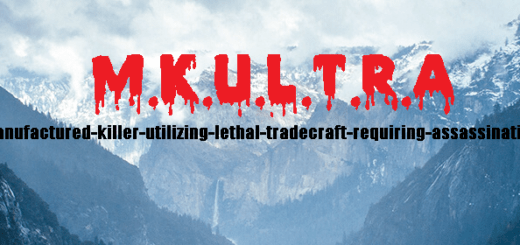R You Dealing With a Narcissist? They NEVER take Responsibility For Their Own Bad Actions. BEWARE! Our Elite Are Malignant Narcissists & Pedophiles Who NEVER Take Responsibility for Damaging Children.
The results underscore the severity of cortical thinning in U.S. Veterans suffering from high level of PTSD symptoms, as well as in Veterans with no PTSD diagnosis but severe combat exposure. The latter finding raises considerable concerns about a concealed injury potentially related to combat exposure in the post-9/11 era.
Dr. Todd Grande437K subscribersSUBSCRIBEThis video answers the question: Can I analyze a case study featuring a narcissist who snapped? Sometimes snapping is referred to as an episode of narcissistic rage. What does it mean to snap? There is no official scientific definition, but for the purposes this video, here is the definition: when somebody suddenly manifests aggression that is different from their normal behavior. People can snap for a variety of reasons. The cause of snapping comes down to a combination of stress and personality. Narcissists are susceptible due to their personality structure and they are also susceptible because they create stress through their behavior.
There are two types of narcissism: With grandiose narcissism we see characteristics like being extroverted, socially bold, self-confident, having a superficial charm, being resistant to criticism, and being callous and unemotional. Vulnerable narcissism is characterized by shame, anger, aggression, hypersensitivity, a tendency to be introverted, defensive, avoidant, anxious, depressed, socially awkward, and shy. Support Dr. Grande on Patreon: https://www.patreon.com/drgrandeSHOW LESS
Julia-Venetian Cat Fine Art6 months ago (edited)So often, companies enable the narcissist and blame the victim, same with schools-and the bully gets away with it time and again. NICE to see that once in a while, one gets exposed. These should be shown to management in every company as a part of management education. Videos like yours really put light on the subject, and knowledge is 99% of the resolution to this issue. Thank you for taking the time out of your surely busy schedule, to post these videos. Cheers from New Mexico USA!
Narcissistic personality disorder
We’re welcoming patients at Mayo Clinic
See our safety precautions in response to COVID-19.
Overview
Narcissistic personality disorder — one of several types of personality disorders — is a mental condition in which people have an inflated sense of their own importance, a deep need for excessive attention and admiration, troubled relationships, and a lack of empathy for others. But behind this mask of extreme confidence lies a fragile self-esteem that’s vulnerable to the slightest criticism.
A narcissistic personality disorder causes problems in many areas of life, such as relationships, work, school or financial affairs. People with narcissistic personality disorder may be generally unhappy and disappointed when they’re not given the special favors or admiration they believe they deserve. They may find their relationships unfulfilling, and others may not enjoy being around them.
Treatment for narcissistic personality disorder centers around talk therapy (psychotherapy).
Products & Services
Show more products from Mayo Clinic
Symptoms
Signs and symptoms of narcissistic personality disorder and the severity of symptoms vary. People with the disorder can:
Have an exaggerated sense of self-importance
Have a sense of entitlement and require constant, excessive admiration
Expect to be recognized as superior even without achievements that warrant it
Exaggerate achievements and talents
Be preoccupied with fantasies about success, power, brilliance, beauty or the perfect mate
Believe they are superior and can only associate with equally special people
Monopolize conversations and belittle or look down on people they perceive as inferior
Expect special favors and unquestioning compliance with their expectations
Take advantage of others to get what they want
Have an inability or unwillingness to recognize the needs and feelings of others
Be envious of others and believe others envy them
Behave in an arrogant or haughty manner, coming across as conceited, boastful and pretentious
Insist on having the best of everything — for instance, the best car or office
At the same time, people with narcissistic personality disorder have trouble handling anything they perceive as criticism, and they can:
- Become impatient or angry when they don’t receive special treatment
- Have significant interpersonal problems and easily feel slighted
- React with rage or contempt and try to belittle the other person to make themselves appear superior
- Have difficulty regulating emotions and behavior
- Experience major problems dealing with stress and adapting to change
- Feel depressed and moody because they fall short of perfection
- Have secret feelings of insecurity, shame, vulnerability and humiliation
When to see a doctor
People with narcissistic personality disorder may not want to think that anything could be wrong, so they may be unlikely to seek treatment. If they do seek treatment, it’s more likely to be for symptoms of depression, drug or alcohol use, or another mental health problem. But perceived insults to self-esteem may make it difficult to accept and follow through with treatment.
If you recognize aspects of your personality that are common to narcissistic personality disorder or you’re feeling overwhelmed by sadness, consider reaching out to a trusted doctor or mental health provider. Getting the right treatment can help make your life more rewarding and enjoyable.
Cortical Thickness Reduction in Combat Exposed U.S. Veterans with and without PTSD
Abstract
We investigated the extent of cortical thinning in U.S. Veterans exposed to combat who varied in the severity of their posttraumatic stress disorder (PTSD) symptoms. In addition, we explored the neural correlates of PTSD symptom dimensions and the interactive effects of combat exposure and PTSD upon cortical thickness. Sixty-nine combat exposed Veterans completed high-resolution magnetic resonance imaging (MRI) scans to estimate cortical thickness. The Clinician Administered PTSD Scale (CAPS) and Combat Exposure Scale (CES) assessments were completed to measure current PTSD and historical combat severity, respectively. PTSD symptom dimensions (numbing, avoidance, reexperiencing, anxious arousal, and dysphoric arousal) were studied. Vertex-wise whole cerebrum analyses were conducted. We found widespread negative correlations between CAPS severity and cortical thickness, particularly within the prefrontal cortex. This prefrontal correlation remained significant after controlling for depression severity, medication status, and other potential confounds. PTSD dimensions, except anxious arousal, negatively correlated with cortical thickness in various unique brain regions. CES negatively correlated with cortical thickness in the left lateral prefrontal, regardless of PTSD diagnosis. A significant interaction between CES and PTSD diagnosis was found, such that CES negatively correlated with cortical thickness in the non-PTSD, but not in the PTSD, participants. The results underscore the severity of cortical thinning in U.S. Veterans suffering from high level of PTSD symptoms, as well as in Veterans with no PTSD diagnosis but severe combat exposure. The latter finding raises considerable concerns about a concealed injury potentially related to combat exposure in the post-9/11 era.Keywords: PTSD, combat, Veteran, neuroimaging, cortical thicknessGo to:
1. Introduction
Posttraumatic stress disorder (PTSD) is a disabling illness affecting approximately 7% of the adult U.S. population and up to 25% of combat exposed US Veterans, depending on cohort (Kessler et al., 2005). Yet, the understanding of the pathophysiology of PTSD is limited, with few effective pharmacological treatments. These under-addressed clinical needs are especially relevant to U.S. Veterans, with more than 2.6 million military personnel deployed to war zones in the post-9/11 era and an estimated 23% prevalence of PTSD among US Veterans (Fulton et al., 2015). Better insight into the neural correlates of combat exposure and PTSD symptoms may contribute to rational drug development of novel effective therapeutics. In this study of U.S. Veterans, we examined the relationship between PTSD symptoms, combat exposure, and cortical thickness, a measure of gray matter (GM) integrity. The models and design of the study focus on brain correlates of dimensional symptoms and trauma exposure while attempting to address some of the limitations of prior PTSD GM research, especially regarding the generalizability of results to the Veteran population.
Accumulating evidence implicates synaptic dysconnectivity in the pathophysiology of trauma and chronic stress (Pitman et al., 2012; Popoli et al., 2012; Reul and Nutt, 2008). It has been proposed that stressors initially activate glutamate circuits and trigger proinflammatory processes, which initiate a cascade of neural events that impair synaptic connectivity, contributing to the chronic effects of trauma and stress (Abdallah et al., 2015b; Averill et al., 2016). In this model, trauma and chronic stress impair glutamate neurotransmission and increase extrasynaptic glutamate levels, which precipitate excitotoxicity and affect synaptic integrity, as evidenced by a reduction of synaptic density and strength, as well as dendritic retraction and reduced arborization, in prefrontal and hippocampal circuits regulating emotion and stress responses (Abdallah et al., 2015a). In susceptible individuals subjected to major trauma, these stressor-induced synaptic deficits interact with predisposing vulnerabilities (e.g., amygdala reactivity, cortisol/NPY dysregulation) to impair fear and learning regulation and precipitate a constellation of PTSD symptoms, which further perpetuate the vicious effects of trauma and chronic stress (Abdallah et al., 2017; Averill et al., 2016). This synaptic model predicts that current PTSD symptoms and the severity of trauma history, as two major stressors, would negatively affect GM integrity. This stress-based model is most consistent with the “sustained threat” or “chronic stress” construct of the Negative Valence Systems in NIMH’s Research Domain Criteria (RDoC).
Structural Magnetic Resonance Imaging (MRI) can provide an indirect measure of GM integrity by estimating the volume or shape of a brain region. Preclinical evidence has demonstrated that stress induced changes in GM structure reflect underlying alterations in synaptic microstructure and density (Kassem et al., 2013). Extensive literature utilizing MRI methods over the past 2 decades has shown impaired GM integrity in patients diagnosed with PTSD. For example, meta-analyses in PTSD have reported reduced GM volume in the hippocampus, anterior cingulate cortex (ACC), and medial prefrontal cortex (PFC) (Kuhn and Gallinat, 2013; O’Doherty et al., 2015); structures that are broadly part of networks supporting emotion processing and the acquisition and extinction of fear. Several studies have reported reduced cortical thickness in various brain regions in PTSD patients (Geuze et al., 2008b; Hunter et al., 2011; Liu et al., 2012; Mueller et al., 2015; Qi et al., 2013; Woodward et al., 2009; Xie et al., 2013), but also see (Landre et al., 2010; Li et al., 2016). Some studies demonstrated a negative correlation between cortical thickness and PTSD severity (Corbo et al., 2014; Lindemer et al., 2013; Liu et al., 2012; Sadeh et al., 2016). Greater cortical thickness was previously associated with resilience and enhanced recovery from PTSD symptoms (Dickie et al., 2013; Lyoo et al., 2011; Nilsen et al., 2016), although not without inconsistencies (Helpman et al., 2016).
To date, MRI studies in PTSD have provided essential insight into putative pathophysiological pathways of the disorder (Bremner et al., 1995; Morey et al., 2012; Woodward et al., 2006; Woodward et al., 2009). However, additional state-of-the-art design and methods are still needed to complement prior evidence and begin to map GM abnormalities to the clinical characteristics of PTSD, as well as to the distinctive effects of trauma exposure. In particular, it is essential to investigate the effect of combat exposure on GM integrity in Veterans with and without PTSD. A recent report found a negative correlation between combat severity and cortical thickness in Veterans with chronic pain (Corbo et al., 2016). In this study, we focused on determining the association between combat severity and GM integrity, while attempting to address some of the gaps of prior evidence. For example, pioneering studies have primarily investigated GM integrity in case-control studies of those with a diagnosis of PTSD versus those without a diagnosis (Kuhn and Gallinat, 2013; O’Doherty et al., 2015). Though this approach has the strength of creating a large contrast, it also creates a potentially artificial dichotomization, especially if traumatic effects and related psychopathology are on a continuum of biological abnormalities and clinical severity. Therefore, we included combat exposed Veterans regardless of their PTSD diagnosis, aiming to capture a linear spread of PTSD symptom characteristics and severity, consistent with a dimensional approach such as RDoC. In addition, our study exclusion criteria were carefully selected to enhance the generalizability of the results to a clinical Veteran population.
In a cohort of 69 combat exposed US Veterans, we measured PTSD severity using the Clinician Administered PTSD Scale (CAPS) and confirmed that CAPS scores were continuously spread between low and high severity (Fig. S1). Our primary analysis examined the relationship between total CAPS scores and cortical thickness throughout the cerebrum, followed by region of interest (ROI) analysis of the prefrontal cortex (PFC) thickness. The PFC ROI analysis was used 1) based on the predictions of the synaptic model described above, 2) because the PFC plays a critical role in the pathophysiology of PTSD, and 3) because gray matter integrity within the PFC were previously correlated with PTSD pathology and recovery (Dickie et al., 2013; Lyoo et al., 2011; Woodward et al., 2006; Woodward et al., 2013). The PFC ROI analysis permitted the examination of several putative confounds, as well as reducing type I error due to multiple comparisons. Secondary analyses investigated the association between cortical thickness and five dimensions of PTSD symptoms (i.e., reexperiencing, anxious arousal, dysphoric arousal, numbing, and avoidance) (Pietrzak et al., 2012).
We also investigated whether combat exposure severity is directly related to cortical thickness or interacts with PTSD pathology. Consistent with the synaptic model of chronic stress, we predicted a negative correlation between PTSD severity and cortical thickness, in particular in the PFC. We hypothesized that combat exposure scale (CES) would negatively affect cortical thickness regardless of psychopathology and that CES would have an additive or synergistic effect in combination with PTSD pathology, such that the negative correlation between CES and thickness would be more robust in those with PTSD. This hypothesis was tested by first correlating CES with cortical thickness controlling for PTSD diagnosis (i.e., CES effects). Then, we studied the interaction between CES and PTSD.















